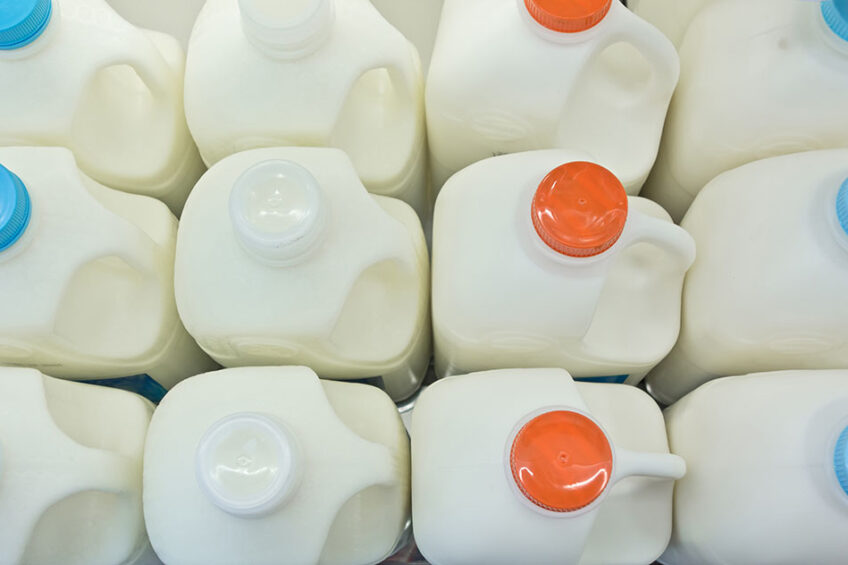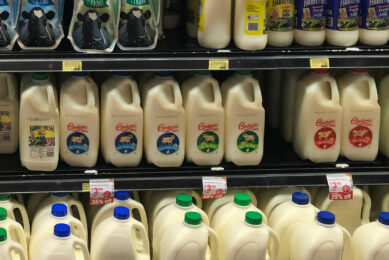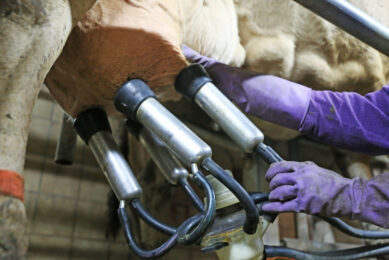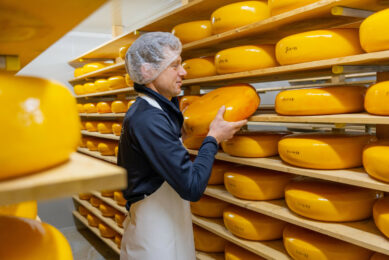Global dairy: Slow down supply, teetering production

Global dairy markets are teetering at low milk production levels not seen since 2014, Rabobank says in a new report.
The bank emphasises weather-related issues have decimated peak milk production in New Zealand and Australia, while supply growth has also been hindered in the US and Europe by squeezed profit margins for producers. “This has resulted in a year-on-year global milk production deficit that is too deep to be offset by favourable milk production gains seen in South America,” the report says.
Rabobank points out that – after 9 consecutive quarterly increases – combined global milk supply growth in the major dairy exporting regions halted in Q3 this year and will dip into negative territory in Q4.
Senior dairy analyst, Michael Harvey of Rabobank, report co-author, says combined Q4 milk production in the big 7 dairy exporting regions – New Zealand, Brazil, Argentina, Uruguay, EU, US and Australia – is expected to decline by 0.3% compared with Q4 of 2020.
Farmgate milk prices in Australia and New Zealand have followed higher worldwide commodity prices, “with more potential upside still to come in some regions,” the report says. “Still, rising costs for inputs, labour shortages, unfavourable weather and questionable feed quality will limit the production response by producers.”
Global dairy exports
Global dairy exports have slowed in response to logistic disruptions, rising transportation costs, and elevated commodity prices. Global dairy exports based on product volume ran 7% ahead of the prior year during the first half of 2021, but slowed to 1% in July and August.
Harvey expects a slowdown in demand for dairy inputs from China. “This is needed to cool global prices in the face of limited supply-side increases. Chinese buyers are torn between the bullish sentiment outside China and the current weak fundamentals within China to decide whether, when, and at what price levels they should return to the market,” he said.
Despite rising inflationary pressures, consumers are not yet deterred by higher dairy prices in most countries. The report says that would not be the case in 2022, as higher commodity prices from the second half of 2021 are passed through to consumers. “In addition, new variants of Covid-19, inflation, labour and logistic challenges, along with others, weigh on the global economic recovery with the potential for global dairy markets to ‘teeter or totter’.”
Global supply slow down
A sluggish spring milk production peak in New Zealand – the world’s largest dairy exporter – also contributed to a global supply slowdown. New Zealand milk production has only recently started to benefit from more sunshine and warmth for much of the country. “Unfortunately, the change to more favourable weather was too late for the peak milk month of October, when collections dropped by 3.3% year-on-year,” says Harvey. Rabobank’s New Zealand milk production forecast for the entire 2021-2022 season is -1% year-on-year.
The report adds that in Australia many dairy farms have been dealing with a wet spring – particularly in Victoria and Tasmania. October – peak dairy production in Australia – saw output down 2.1% below last year. “This means season-to-date production is down 2.9%,” Harvey points out. Rabobank has lowered its milk production forecast for Australia, to -1.8% for the 2021-2022 season, back to 8.68 billion litres.
Rising farmgate milk prices
Dairy companies in Australia’s southern export region are raising their initial announced farmgate milk prices. “There is potential for further increases as dairy exporters benefit from higher commodity prices, particularly skim milk powder. But there are lingering headwinds for local dairy exporters given the weaker-than-expected spring flush and ongoing supply chain bottlenecks and disruptions,” Harvey said.
Rabobank’s revised farmgate milk modelled price for 2021-2022 stands at AUD7.75 (US$5.52) per kg milk solids. “Australian dairy farmers continue to enjoy good margins,” Harvey says. “There are, though, production and margin risks beyond the weather, which will remain into the new year. Input costs have spiked for fertiliser and herbicide, with supply risks lurking in the next few months.”
High water allocations and healthy soil moisture profiles will provide good prospects for summer feed crops. Rabobank also forecasts another large Australian winter grain crop for this 2021-2022 season. “But global prices are supporting local prices,” Harvey says.
Australian dairy exports have remained buoyant this year. Export volumes are higher across all the major commodities. Liquid milk exports have been strong, underpinned by Chinese demand with volumes 25% higher. Exports of skim milk powder and butter have also performed well.










